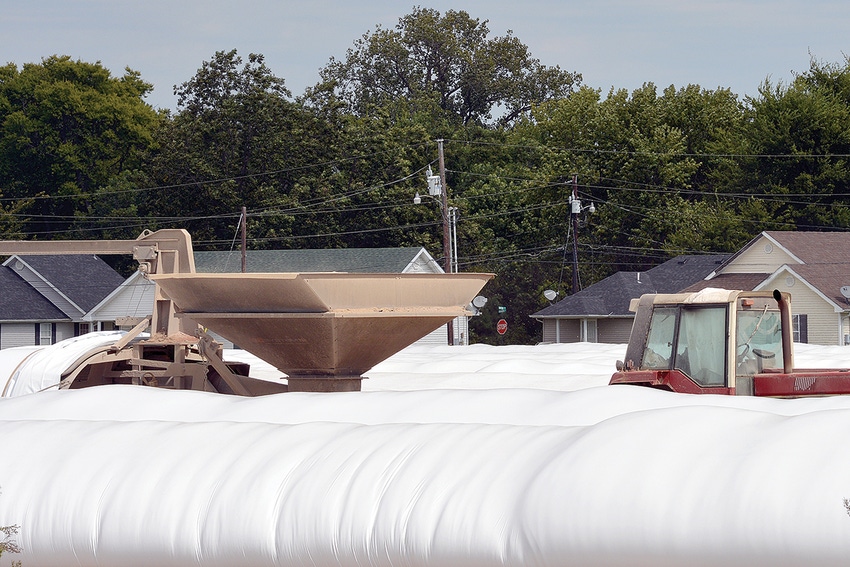
ARC-County, PLC 2015 payments begin arriving in farmers’ mail boxes
“This has been a rough marketing year for farmers, with wheat prices dropping lower than we’ve seen in decades,” said National Association of Wheat Growers President Gordon Stoner in a press release that followed USDA’s announcement.

USDA announced it has begun making safety-net payments to many of the 1.7 million farms enrolled in either the Agricultural Risk Coverage or Price Loss Coverage programs due to the market downturn that occurred in 2015.
The payments are expected to total more than $7 billion, a figure that is likely to add more fuel to the debate over the next farm bill, which is scheduled to be renewed in 2018. The $7 billion is expected to account for more than 10 percent of USDA’s projected 2016 net farm income.
“These payments will help provide reassurance to America's farm families, who are standing strong against low commodity prices compounded by unfavorable growing conditions in many parts of the country,” said Agriculture Secretary Tom Vilsack, in announcing the $7 billion in ARC-County and PLC payments.
“At USDA we are standing strong behind them, tapping in to every resource that we have to help. So far in 2016, this has included creating a one-time cost share program for cotton ginning, purchasing about $800 million in excess commodities to be redirected to food banks and those in need, making $11 million in payments to America's dairy farmers through the Dairy Margin Protection Program, and reprogramming Farm Service Agency funds to expand credit options for farmers and ranchers in need of extra capital.”
Vilsack said USDA will continue to watch market conditions and will explore opportunities for further assistance in the coming months. “For producers challenged by weather, disease and falling prices, we will continue to ensure the availability of a strong safety net to keep them farming or ranching,” he said.
Follow price decreases
In a press release announcing the payments, USDA contrasted the ARC-PLC payments with the old direct payment program, which issued payments during both weak and strong market conditions. The 2014 farm bill authorized the ARC-PLC safety net to trigger and provide financial assistance only when decreases in revenues or crop prices, respectively, occur.
USDA said the ARC and PLC programs primarily allow producers to continue to produce for the market by making payments on a percentage of historical base production, limiting the impact on production decisions.
According to USDA, producers enrolled 96 percent of soybean base acres, 91 percent of corn base acres and 66 percent of wheat base acres in the ARC-County coverage option in 2015. Producers enrolled 99 percent of long grain rice and peanut base acres and 94 percent of medium grain rice base acres in the PLC option. Overall, 76 percent of participating farm base acres are enrolled in ARC-County, 23 percent in PLC and one percent in ARC-Individual.
Payments are currently being made to producers who enrolled base acres of barley, corn, grain sorghum, lentils, oats, peanuts, dry peas, soybeans, wheat and canola in the ARC-County and PLC programs.
In the upcoming months, payments will be announced after marketing year average prices are published by USDA's National Agricultural Statistics Service for the remaining covered commodities. These include long and medium grain rice (except for temperate Japonica rice), which will be announced in November, remaining oilseeds and chickpeas, which will be announced in December, and temperate Japonica rice, which will be announced in early February 2017.
6.8-percent sequester
USDA said the Budget Control Act of 2011 requires the Agriculture Department to reduce 2015 ARC and PLC payments by 6.8 percent. For more information, producers are encouraged to visit their local Farm Service Agency office. To find a local FSA office, visit http://offices.usda.gov.
“USDA works to strengthen and support American agriculture, an industry that supports one in 11 American jobs, provides American consumers with more than 80 percent of the food we consume, ensures that Americans spend less of their paychecks at the grocery store than most people in other countries, and supports markets for homegrown renewable energy and materials,” the press release said.
“This has been a rough marketing year for farmers, with wheat prices dropping lower than we’ve seen in decades,” said National Association of Wheat Growers President Gordon Stoner in a press release that followed USDA’s announcement.
“It’s years like this that a viable farm safety net is critically important, and I applaud Secretary Vilsack’s quick action to roll out these programs this new fiscal year. The program payments being announced today will provide a needed cushion for farmers during these tough economic conditions in wheat country.”
With today’s announcement, Stoner said NAWG will dig deeper into the data that was used to calculate county payment rates and will seek feedback from states about the effectiveness of these programs. USDA’s Farm Service Agency has posted maps on its website showing the payment rate ranges for wheat, corn, and soybeans through the ARC-County program, as well as revenue maps for those commodities.
For other program information including frequently asked questions, visit www.fsa.usda.gov/arc-plc.
About the Author(s)
You May Also Like





